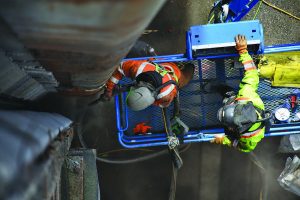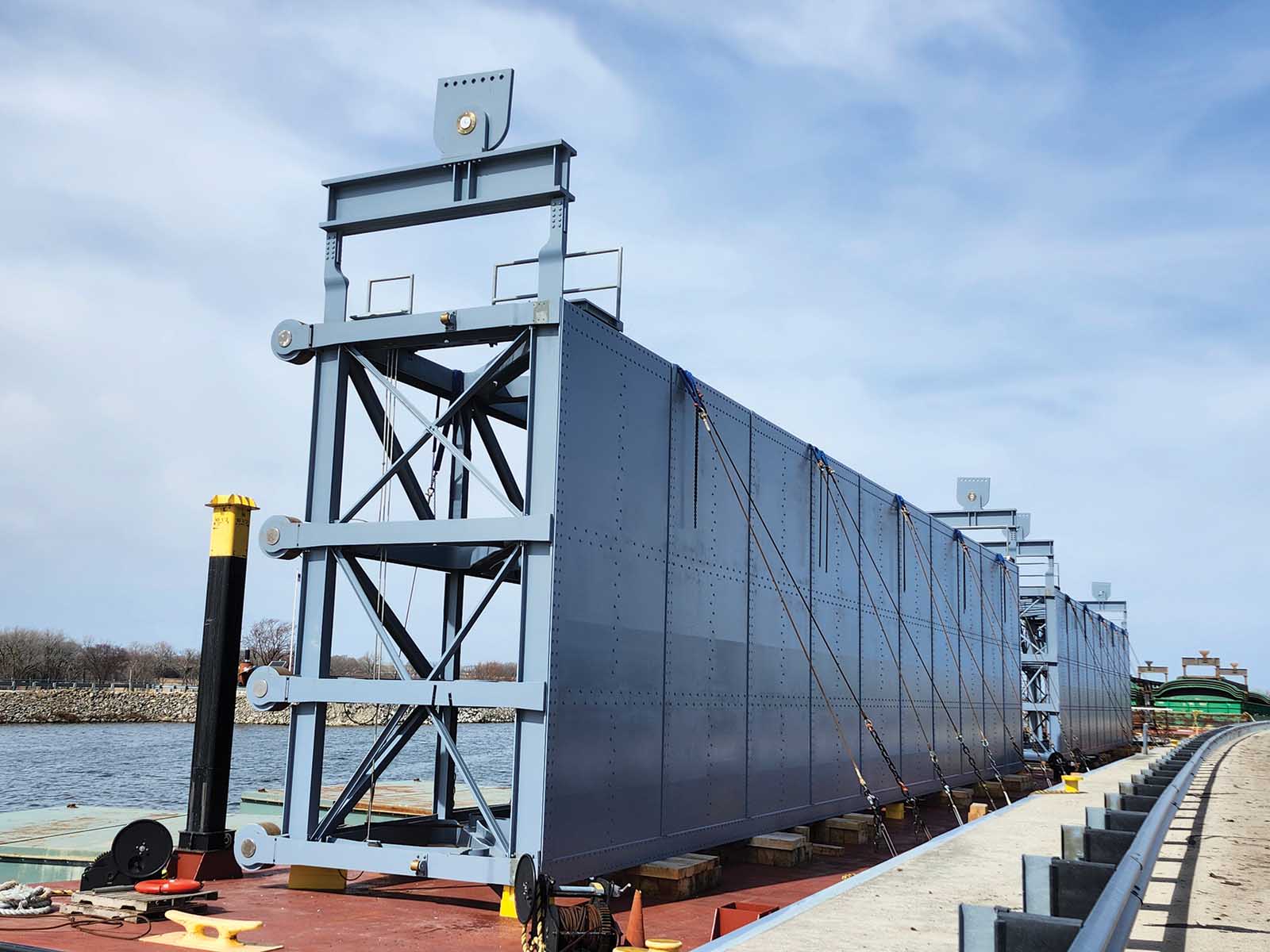Corps of Engineers crews were making final adjustments as they prepared to reopen the navigational lock at Lockport Lock and Dam on the Illinois River no later than 6 p.m. April 4.
The Corps discovered damage to the lower miter gates at the facility, located at Illinois River Mile 291, during a February dewatering scheduled for work on the lock’s upper miter gates. The lock closed January 28 and was originally scheduled to reopen on March 28.

Until an innovative carbon fiber wrap was proposed as a solution for cracked portions of the lock’s pintles, the hinges on which the lower miter gates swing, the Corps said it might not be possible to open until late April or early May. Since there are no auxiliary locks on the Illinois Waterway, the closure effectively cut off the city of Chicago, Ill., and its access to the Great Lakes from the Mississippi River. The Corps’ Engineering Research and Design Center joined Chicago and Rock Island crews to install the wrap March 14-15.
The Corps has provided weekly industry stakeholder updates throughout the closure. In the March 31 update, Mike Walsh, Waterways Project Office chief for the Chicago Engineer District, said final repairs were underway.
The chamber has been successfully rewatered with both new upper gates installed, and initial testing and calibration has been completed, Walsh said. He said seal fit and shimming the new gates was ongoing. The first two boats are awaiting their turn southbound when the lock reopens.
Part of the repair work involved installation of strain gates on the lower pintle casting. Walsh said a five- to six-week closure to install new pintle castings will be required, likely late in the fall or in the early winter.
“We’ll keep you guys posted once we have a delivery timeline,” he said.
Design for the castings is expected to be complete by the end of April with the order to be placed during the first week of May.
“I will tell you right now that the replacement pintle sockets are not going to be delivered until September at the earliest, the way things look,” Walsh said.
He added, “Everybody’s still very confident” of the temporary repairs allowing the cracked pintles to continue to function until the new castings arrive.
Additionally, he said, there will be an estimated five or six locking cycles with the fleet moving around and pulling bulkheads to ensure that the lock is functioning well, including proximity switches functioning as designed.
“If anything comes up, we’re going to make sure we’re communicating that to your guys,” Walsh said.
Terry Bass, president of the Illinois River Carriers’ Association, thanked Walsh for the communication throughout the closure.
It will be important to protect the lower miter gates until the pintles are replaced, Walsh said. If a tow rubs a gate, he said it might require a short closure for a dive inspection.
Additionally, the Corps has put temporary safety procedures in place. Those include a strict 90-foot width restriction, which is anticipated to impact only about 10 percent of traffic moving through the lock, Walsh said, since most tows transiting it are 70 feet wide or narrower to fit between bridge piers elsewhere on the system.
Lock personnel are also requiring the use of bumpers and staying off the gates, especially the left descending gate. Recreational vessels may be asked to transit the lock in groups, when possible, to reduce the number of lockages overall.
Additionally, while three-piece unit tows locking as a setover are permitted northbound, southbound three-piece unit tows cannot be accommodated without the use of an industry provided assist boat to keep the long string off the left descending gate, which is the more damaged gate.
————
Featured photo caption: New upper miter gates are staged for installation in the navigational lock at Lockport Lock and Dam. (Photo by Paul Mazzeno, Operations and Regulatory Division Chief, Chicago Engineer District)




